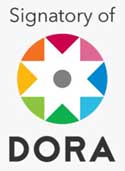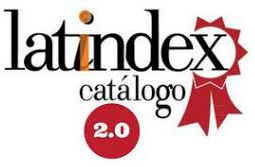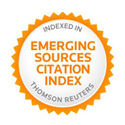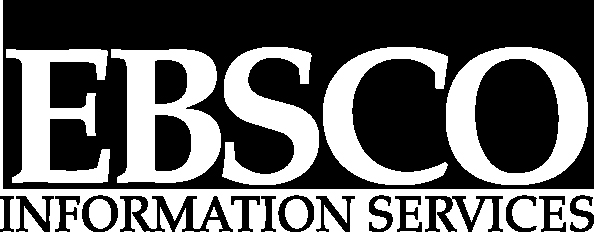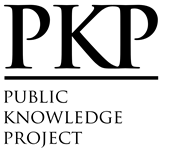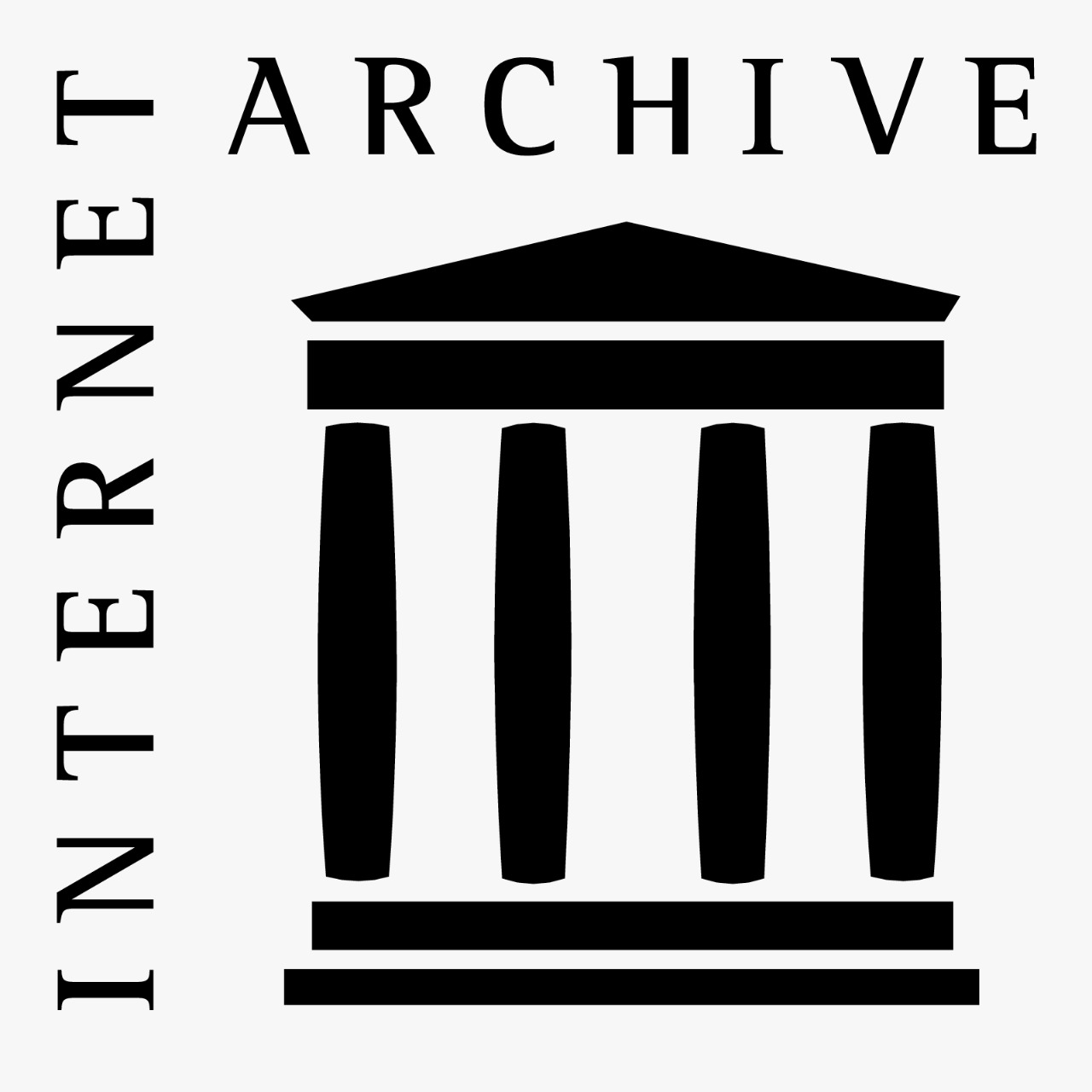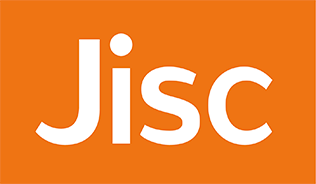Desafíos actuales frente a la medición de la reputación corporativa
Resumen
Hay un acuerdo entre los investigadores acerca de que la reputación corporativa es uno de los más valiosos activos intangibles en toda organización (en el presente estudio los términos reputación y reputación corporativa se emplearán indistintamente). Dado que la gestión de la reputación inevitablemente requiere poder medirla, esta investigación presenta los principales criterios de decisión y desafíos en la elección o el desarrollo de una herramienta de medida de la reputación corporativa. El documento evidencia que así como no hay un criterio único para definir a la reputación corporativa, tampoco lo hay para medirla tanto en el campo profesional como en el académico, y mediante un proceso sistemático de análisis sobre investigaciones previas, pone luz sobre las áreas que aún requieren de acuerdo e investigaciones futuras.
Descargas
Citas
Aaker, J. L. (1997). Dimensions of brand personality. Journal of Marketing Research (JMR), 34 (3), 347-356.
Anderson, J. C. & Gerbing, D. W. (1988). Structural equation modeling in practice: a review and recommended two-step approach. Psychological
Bulletin, 103 (3), 411.
Bagozzi, R. P. (1994). The evaluation of structural equation models and hypothesis test. En: Bagozzi, R. P. (ed.). Principles of marketing research. Cambridge, Massachussets: Blackwell Business.
Bagozzi, R. P. (2007). On the meaning of formative measurement and how it differs from reflective measurement: comment on Howell, Breivik, and Wilcox (2007). Psychological Methods, 12 (2), 229-237.
Bagozzi, R. P. & Edwards, J. (2000). On the nature and direction of relationships between constructs and measures. Psychological Methods, 5 (2), 155-174.
Barnett, M. L., Jermier, J. M. & Lafferty, B. A. (2006). Corporate reputation: the definitional landscape. Corporate Reputation Review, 9 (1), 26-38.
Basdeo, D. K., Smith, K. G., Grimm, C. M., Rindova, V. P. & Derfus, P. J. (2006). The impact of market actions on firm reputation. Strategic Management Journal, 27 (12), 1205-1219.
Bennett, R. & Gabriel, H. (2003). Image and reputational characteristics of UK charitable organizations: an empirical study. Corporate Reputation Review, 6 (3), 276-289.
Berens, G. & Van Riel, C. B. M. (2004). Corporate associations in the academic literature: three main streams of thought in the reputation measurement literature. Corporate Reputation Review, 7 (2), 161-178.
Bergkvist, L. & Rossiter, J. R. (2007). The predictive validity of multiple-item versus single-item measures of the same constructs. Journal of Marketing Research (JMR), 44 (2), 175-184.
Bollen, K. A. (2007). Interpretational confounding is due to misspecification, not to type of indicator: comment on Howell, Breivik, and Wilcox (2007). Psychological Methods, 12 (2), 219-228.
Boshoff, C. (2009). A psychometric assessment of an instrument to measure a service firm’s customerbased corporate reputation. South African Journal of Business Management, 40 (2), 35-44.
Bromley, D. B. (2000). Psychological aspects of corporate identity, image and reputation. Corporate Reputation Review, 3 (3), 240-252.
Bromley, D. B. (2001). Relationships between personal and corporate reputation. European Journal of Marketing, 35 (3/4), 316-334.
Brown, T. A. (2006). Confirmatory factor analysis for applied research. New York: Guilford Press.
Brown, T. J., Dacin, P. A., Pratt, M. G. & Whetten, D. A. (2006). Identity, intended image, construed image, and reputation: an interdisciplinary framework and suggested terminology. Journal of the Academy of Marketing Science, 34 (2), 99-106.
Campos Souto, M. & Pérez Pascual, J. I. (2006). El diccionario de la Real Academia Española: ayer y hoy. A Coruña: Servizo de Publicacións, Universidade da Coruña.
Carmeli, A. & Freund, A. (2002). The relationship between work and workplace attitudes and perceived external prestige. Corporate Reputation Review, 5 (1), 51-68.
Caruana, A., Cohen, C. & Krentler, K. A. (2006). Corporate reputation and shareholders’ intentions: an attitudinal perspective. Journal of Brand Management, 13 (6), 429-440.
Caruana, A. & Chircop, S. (2000). Measuring corporate reputation: a case example. Corporate Reputation Review, 3 (1), 43-57.
Cordeiro, J. J. & Schwalbach, J. (2000). Preliminary evidence on the structure and determinants of global corporate reputations. Paper presented at the Discussion Paper Series, Institute of Management, Humboldt University Berlin.
Costner, H. L. (1969). Theory, deduction, and rules of correspondence. American Journal of Sociology, 75 (2), 245-263.
Cravens, K., Goad Oliver, E. & Ramamoorti, S. (2003). The Reputation Index: measuring and managing corporate reputation. European Management Journal, 21 (2), 201.
Chetthamrongchai, P. (2010). Revalidating two measures of reputation in Thailand. Corporate Reputation Review, 13 (3), 209-219. doi: 10.1057/crr.2010.17
Chun, R. (2005). Corporate reputation: meaning and measurement. International Journal of Management Reviews, 7 (2), 91-109. doi: 10.1111/j.1468-2370.2005.00109.x
Churchill Jr, G. A. (1979). A paradigm for developing better measures of marketing constructs. Journal of Marketing Research (JMR), 16 (1), 64-73.
da Camara, N. Z. (2011). “Identity, image and reputation”. En: Helm S., Liehr-Gobbers, K. & Storck, C. (eds.). Reputation management. Berlin: Springer-Verlag.
Dalton, J. (2003). PR ethics and reputation. Maribor, Eslovenia: Spem Komunikacije. Tomado de http://www.spem.si/files/novice/Prezentacija-PRandEthics.ppt el 10 de marzo de 2013.
Davies, G. (2003). Corporate reputation and competitiveness. London: Routledge.
Davies, G., Chun, R., da Silva, R. V. & Roper, S. (2001). The personification metaphor as a measurement approach for corporate reputation. Corporate Reputation Review, 4 (2), 113.
Davies, G., Chun, R., da Silva, R. V. & Roper, S. (2004). A corporate character scale to assess employee and customer views of organization reputation. Corporate Reputation Review, 7 (2), 125-146.
Davies, G., Chun, R., da Silva, R. V. & Roper, S. (2003). Corporate reputation and competitiveness. London: Routledge.
de Castro, G. M., López, J. E. N. & Sáez, P. L. (2006). Business and social reputation: exploring the concept and main dimensions of corporate reputation. Journal of Business Ethics, 63 (4), 361-370. doi: 10.1007/s10551-005-3244-z.
Diamantopoulos, A. & Siguaw, J. A. (2006). Formative versus reflective indicators in organizational measure development: a comparison and empirical illustration. British Journal of Management, 17 (4), 263-282. doi: 10.1111/j.1467-8551.2006.00500.x
Diamantopoulos, A. & Winklhofer, H. M. (2001). Index construction with formative indicators: an alternative to scale development. Journal of Marketing Research (JMR), 38 (2), 269-277.
Dollinger, M. J., Golden, P. A. & Saxton, T. (1997). The effect of reputation on the decision to joint venture. Strategic Management Journal, 18 (2), 127-140.
Dowling, G. R. (1988). Measuring corporate images: a review of alternative approaches. Journal of Business Research, 17 (1), 27-34. doi: 10.1016/0148-2963(88)90019-7.
Ettenson, R. & Knowles, J. (2008). Don’t confuse reputation with brand. MIT Sloan Management Review, 49 (2), 19-21.
Fiedler, L. & Kirchgeorg, M. (2006). Impact of brand image components on behavioral intentions of stakeholders: insights for corporate branding strategies. En: Proceedings of the American Marketing Association Conference, Chicago: AMA.
Flanagan, D. J. & O’Shaughnessy, K. C. (2005). The effect of layoffs on firm reputation. Journal of Management, 31 (3), 445-463. doi: 10.1177/0149206304272186
Fombrun, C. J. (1996). Reputation: realizing value from the corporate image. Boston, Massachusetts: Harvard Business School Press.
Fombrun, C. J. (2007). List of lists: a compilation of international corporate reputation ratings. Corporate Reputation Review, 10 (2), 144-153. doi: 10.1057/palgrave.crr.1550047
Fombrun, C. J. & Gardberg, N. (2000). Who’s tops in corporate reputation? Corporate Reputation Review, 3 (1), 13-17.
Fombrun, C. J., Gardberg, N. A. & Sever, J. M. (2000). The reputation quotient: a multi-stakeholder measure of corporate reputation. Journal of Brand Management 7 (4), 241-255.
Fombrun, C. J. & Rindova, V. (2002). The road to transparency: reputation managementat royal dutch/Shell. En: Schultz, M., Hatch, M. J., Larsen, M. H., Fombrun, C. J. & Rindova, V. P. (eds.). Expressive organization (p. 77-96). Oxford University Press/Books.
Fombrun, C. & Shanley, M. (1990). What’s in a name? Reputation building and corporate strategy. Academy of Management Journal, 33 (2), 233-258. doi: 10.2307/256324.
Fornell, C. (1982). A second generation of multivariate analysis. New York: Praeger.
Gardberg, N. A. & Fombrun, C. J. (2002). The global reputation quotient project: first steps towards a cross-nationally valid measure of corporate reputation. Corporate Reputation Review, 4 (4), 303.
Gotsi, M. & Wilson, A. M. (2001). Corporate reputation: seeking a definition. Corporate Communications, 6 (1), 24-30.
Hair, J. F. & Gómez Suárez, M. (2004). Análisis multivariante (5a. ed.). Madrid: Prentice Hall.
Helm, S. (2005). Designing a formative measure for corporate reputation. Corporate Reputation Review, 8 (2), 95-109.
Helm, S. (2007). One reputation or many?: comparing stakeholders’ perceptions of corporate reputation. Corporate Communications: an International Journal, 12 (3), 238 –254.
Helm, S., Liehr-Gobbers, K. & Storck, C. (2011). Reputation management. New York: Springer.
Highhouse, S., Broadfoot, A., Yugo, J. E. & Devendorf, S. A. (2009). Examining corporate reputation judgments with generalizability theory. Journal of Applied Psychology, 94 (3), 782-789.
Hillenbrand, C. & Money, K. (2006). Using reputation measurement to create value: an analysis and integration of existing measures. Journal of General Management, 32 (1), 1-12.
Hulland, J. (1999). Use of partial least squares (PLS) in strategic management research: a review of four recent studies. Strategic Management Journal, 20(2), 195-195.
Huston, T. L. & Levinger, G. (1978). Interpersonal attraction and relationships. Annual Review of Psychology, 29 (1), 115.
Jarvis, C. B., Mackenzie, S. B., Podsakoff, P. M., Mick, D. G. & Bearden, W. O. (2003). A critical review of construct indicators and measurement model misspecification in marketing and consumer research. Journal of Consumer Research, 30 (2), 199-218.
Kerlinger, F. N. (1973). Foundations of behavioral research (2nd ed.). New York: Holt.
Larkin, J. (2003). Strategic reputation risk management. Basingstoke: Palgrave Macmillan.
Lewellyn, P. G. (2002). Corporate reputation: focusing the zeitgeist. Business and Society, 41 (4), 446-455.
Lewis, S. (2001). Measuring corporate reputation. Corporate Communications, 6 (1), 31-35.
Luque Martínez, T. (2000). Técnicas de análisis de datos en investigación de mercados. Madrid: Pirámide.
Mackenzie, S. B. (2001). Opportunities for improving consumer research through latent variable structural equation modeling. Journal of Consumer Research, 28 (1), 159.
Martínez, J. A. & Martínez, L. (2011). Some new thoughts on formative and reflective measurement models in marketing research. Revista Portuguesa de Marketing, 14 (26), 74-89.
Money, K. & Hillenbrand, C. (2006). Using reputation measurement to create value: an analysis and integration of existing measures. Journal of General Management, 32 (1), 1-12.
Money, K., Hillenbrand, C. & Downing, S. (2011). “Reputation in relationships”. En: Helm, S., LiehrGobbers, K. & Storck, C. (eds.). Reputation management. New York: Springer.
Newell, S. J. & Goldsmith, R. E. (2001). The development of a scale to measure perceived corporate credibility. Journal of Business Research, 52 (3), 235-247.
Nguyen, N. & Leblanc, G. (2001). Corporate image and corporate reputation in customers’ retention decisions in services. Journal of Retailing and Consumer Services, 8 (4), 227-236. doi: citeulike-article-id:8209516
Nunnally, J. C. (1967). Psychometric theory. New York: McGraw-Hill.
Pérez Cabañero, C. & Cervera Taulet, A. (2004). El efecto del conocimiento sobre búsqueda externa de información precompra de bienes y servicios. Revista Europea de Dirección y Economía de la Empresa, 14 (4), 157-170.
Peter, J. P. (1979). Reliability: a review of psychometric basics and recent marketing practices. Journal of Marketing Research (JMR), 16 (1), 6-17.
Ponzi, L. J., Fombrun, C. J. & Gardberg, N. A. (2011). RepTrakTM pulse: conceptualizing and validating a short-form measure of corporate reputation. Corporate Reputation Review, 14 (1), 15-35.
Rindova, V. P., Williamson, I. O., Petkova, A. P. & Sever, J. M. (2005). Being good or being known: an empirical examination of the dimensions, antecedents, and consequences of organizational reputation. Academy of Management Journal, 48 (6), 1033-1049. doi: 10.5465/amj.2005.19573108.
Roberts, P. W. & Dowling, G. R. (2002). Corporate reputation and sustained superior financial performance. Strategic Management Journal, 23 (12), 1077. doi: 10.1002/smj.274.
Rossiter, J. R. (2002). The C-OAR-SE procedure for scale development in marketing. International Journal of Research in Marketing, 19 (4), 305-335.
Sanna, D. (2010). Relaciones entre imagen de marca corporativa, satisfaccion y lealtad: estudio en una escuela de negocios de la Argentina. Buenos Aires: Universidad del CEMA. (Documentos de trabajo; 419).
Shamma, H. M. (2012). Toward a comprehensive understanding of corporate reputation: concept, measurement and implications. International Journal of Business & Management, 7 (16), 151-169. doi: 10.5539/ijbm.v7n16p151.
Staw, B. M. & Epstein, L. D. (2000). What bandwagons bring: effects of popular management techniques on corporate performance, reputation, and CEO pay. Administrative Science Quarterly, 45 (3), 523-556.
Steenkamp, J.-B. E. M. & van Trijp, H. C. M. (1991). The use of LISREL in validating marketing constructs. International Journal of Research in Marketing, 8 (4), 283-299.
Stein, N. (2003). America’s most admired companies. Fortune, 147, 81-87.
van Riel, C. B. M., Stroeker, N. E. & Maathuis, O. J. M. (1998). Measuring corporate images. Corporate Reputation Review, 1 (4), 313-326. doi: 10.1057/palgrave.crr.1540054.
Vidaver-Cohen, D. (2007). Reputation beyond the rankings: a conceptual framework for business school research. Corporate Reputation Review, 10 (4), 278-304. doi: 10.1057/palgrave.crr.1550055.
Walker, K. (2010). A systematic review of the corporate reputation literature: definition, measurement, and theory. Corporate Reputation Review, 12 (4), 357-387. doi: 10.1057/crr.2009.26.
Wartick, S. L. (2002). Measuring corporate reputation. Business & Society, 41 (4), 371.
Zabala, I., Panadero, G., Gallardo, L. M., Amate, C. M., Sánchez-Galindo, M., Tena, I. & Villalba, I. (2005). Corporate reputation in professional services firms: “reputation management based on intellectual capital management”. Corporate Reputation Review, 8 (1), 59-71.
Zuckerman, E. W. (1999). The categorical imperative: securities analysts and the illegitimacy discount. American Journal of Sociology, 104 (5), 1398-1438.
Derechos de autor 2013 Domingo Sanna

Esta obra está bajo licencia internacional Creative Commons Reconocimiento-NoComercial 4.0.
Los autores conservan los derechos de autor y garantizan a la revista el derecho de ser la primera publicación del trabajo. En caso de que puedan publicar en otra revista una traducción del artículo ya publicado en Austral Comunicación, se pide dejar constancia en la versión traducida sobre la publicación original.
La licencia utilizada es CC BY-NC-SA, que permite compartir (copiar y redistribuir el material en cualquier medio y formato) y adaptar (remezclar, transformar y construir sobre el material) bajo los siguientes términos: atribución (reconocer la autoría) y no comercial (no se puede utilizar el material para fines comerciales). Actualización: 1 de febrero de 2022.
Austral Comunicación permite al autor(es) retener los derechos de publicación sin restricciones.



